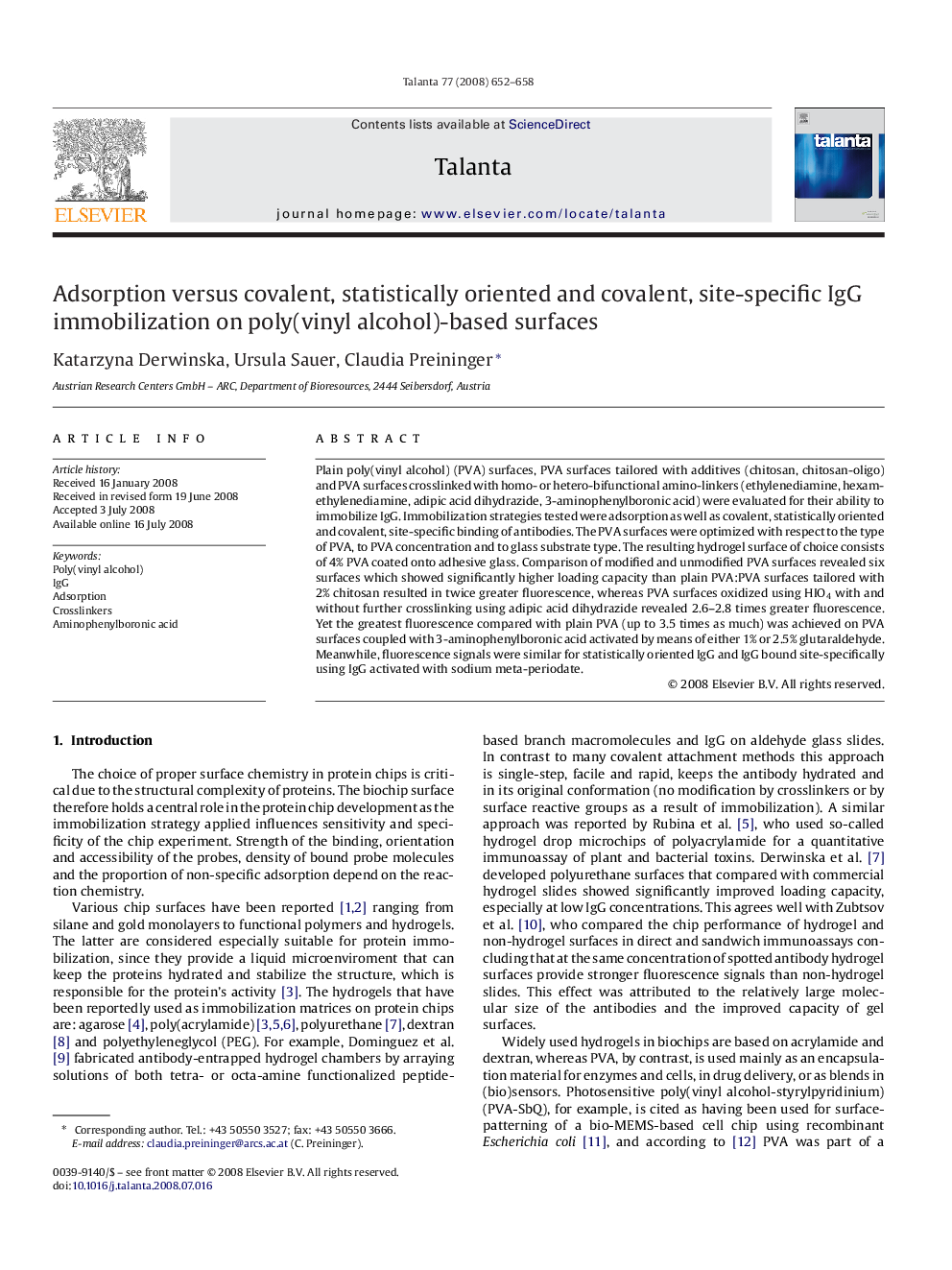| Article ID | Journal | Published Year | Pages | File Type |
|---|---|---|---|---|
| 1243116 | Talanta | 2008 | 7 Pages |
Abstract
Plain poly(vinyl alcohol) (PVA) surfaces, PVA surfaces tailored with additives (chitosan, chitosan-oligo) and PVA surfaces crosslinked with homo- or hetero-bifunctional amino-linkers (ethylenediamine, hexamethylenediamine, adipic acid dihydrazide, 3-aminophenylboronic acid) were evaluated for their ability to immobilize IgG. Immobilization strategies tested were adsorption as well as covalent, statistically oriented and covalent, site-specific binding of antibodies. The PVA surfaces were optimized with respect to the type of PVA, to PVA concentration and to glass substrate type. The resulting hydrogel surface of choice consists of 4% PVA coated onto adhesive glass. Comparison of modified and unmodified PVA surfaces revealed six surfaces which showed significantly higher loading capacity than plain PVA:PVA surfaces tailored with 2% chitosan resulted in twice greater fluorescence, whereas PVA surfaces oxidized using HIO4 with and without further crosslinking using adipic acid dihydrazide revealed 2.6-2.8 times greater fluorescence. Yet the greatest fluorescence compared with plain PVA (up to 3.5 times as much) was achieved on PVA surfaces coupled with 3-aminophenylboronic acid activated by means of either 1% or 2.5% glutaraldehyde. Meanwhile, fluorescence signals were similar for statistically oriented IgG and IgG bound site-specifically using IgG activated with sodium meta-periodate.
Related Topics
Physical Sciences and Engineering
Chemistry
Analytical Chemistry
Authors
Katarzyna Derwinska, Ursula Sauer, Claudia Preininger,
